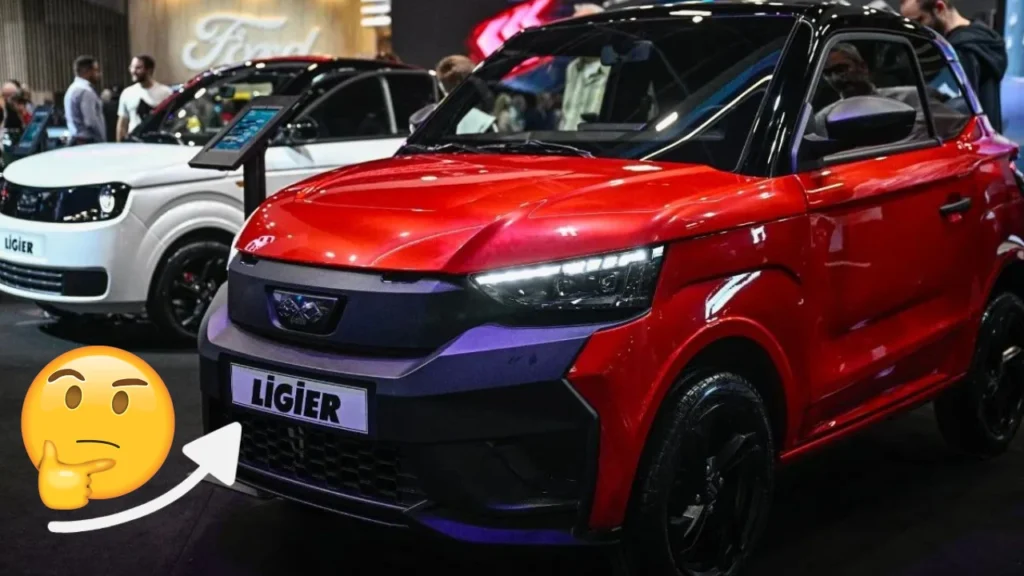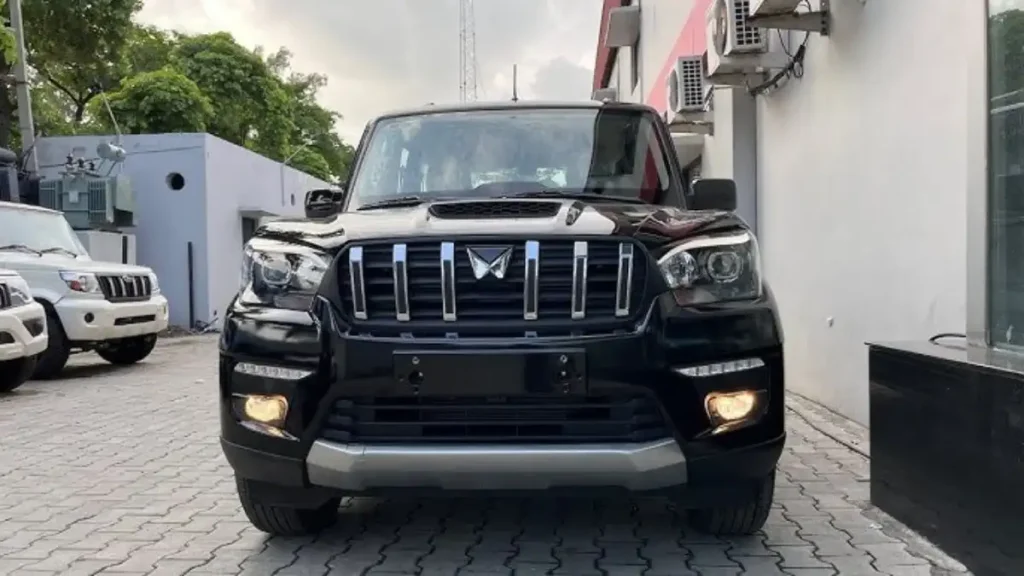In the bustling streets of urban India, where traffic congestion is as predictable as the morning chai, a new contender is making waves in the automotive market. The Ligier Mini EV Buzz, priced at an enticing ₹1 lakh, has sparked conversations across households, tea stalls, and corporate boardrooms alike. As India stands at the crossroads of its automotive future, grappling with soaring pollution levels and unpredictable fuel prices, the question on everyone’s mind is: Is India ready for an affordable electric vehicle (EV) revolution, and can the Ligier Mini EV Buzz be the catalyst?
The Landscape of Indian Mobility: Past, Present, and Electric Future
A Nation on Wheels
India’s relationship with personal mobility has evolved dramatically over the decades. From the iconic Ambassador and Premier Padmini to the Maruti 800, which democratized car ownership in the 1980s, the journey has been one of aspiration and practicality. The last decade saw an explosion of choices, with international brands competing alongside homegrown manufacturers. Yet, one constant remained—the internal combustion engine.
Raghav Sharma, a 67-year-old retired government official from Delhi, recalls, “When I bought my first Maruti in 1985, it was a family celebration. We performed a puja, distributed sweets, and took a family photo beside it. It wasn’t just a car; it was a milestone in our lives.”
This emotional connection to vehicles transcends mere utility, symbolizing progress, status, and achievement. Any new automotive paradigm, including EVs, must navigate this complex socio-cultural landscape.
The EV Momentum: Gathering Pace or Stalling?
The EV story in India has been a mix of progress and setbacks. Government initiatives like FAME (Faster Adoption and Manufacturing of Electric Vehicles) have aimed to boost the sector, but results have been mixed. While the two-wheeler EV segment has shown promising growth, with companies like Ola Electric, Ather, and Hero Electric leading the charge, the four-wheeler market has struggled to gain similar traction.
Recent data from the Society of Manufacturers of Electric Vehicles (SMEV) reveals that while electric two-wheeler sales grew by 32% in 2023, electric car sales still account for less than 2% of the total passenger vehicle market. The primary hurdle? Affordability.
“The fundamental challenge remains the price point,” explains Anand Kulkarni, an automotive industry analyst. “Even with subsidies, most electric cars in India are priced higher than their petrol counterparts. For the average middle-class family, justifying this investment remains difficult.”
Enter the Ligier Mini EV Buzz, promising to bridge this gap.
Decoding the Ligier Mini EV Buzz: Beyond the Price Tag
The Promise of Affordability
The headline-grabbing feature of the Ligier Mini EV Buzz is its price. At approximately ₹1 lakh, it positions itself in a category that has remained elusive for electric four-wheelers—genuine affordability. To put this in perspective, the Tata Tiago EV, currently the most affordable electric car in India, starts at around ₹8.5 lakh. The Ligier, if it delivers on its promise, could represent a paradigm shift.
However, affordability isn’t just about the sticker price. The total cost of ownership, including maintenance, charging infrastructure, battery replacement, and resale value, plays a crucial role in the decision-making process.
Meena Gupta, a 42-year-old software professional from Bangalore, shares her thoughts after test-driving the Ligier prototype: “The initial price is attractive, but I’m more concerned about long-term aspects. How much will it cost to replace the battery after five years? Will there be service centers in my area? These are the questions that will determine whether it’s truly affordable.”
Technical Specifications and Practical Realities
The Ligier Mini EV Buzz is positioned as a micro-mobility solution rather than a conventional car. With a top speed of 45-50 km/h and a range of 50-60 kilometers on a single charge, it’s designed primarily for urban commuting. Its compact dimensions make it ideal for navigating crowded city streets and parking in tight spaces—a significant advantage in India’s metropolitan areas.
However, these same characteristics impose limitations on its utility. Dr. Rajesh Menon, an urban mobility expert, explains, “For urban commuters traveling less than 20 kilometers daily, the Ligier’s range is sufficient. But Indian families traditionally prefer versatile vehicles that can serve multiple purposes—weekend trips, highway journeys, and accommodating extended family members. The Ligier will need to find its niche within these expectations.”
Safety is another concern. While the vehicle meets regulatory requirements for its quadricycle classification, it doesn’t adhere to the same stringent safety standards as conventional passenger cars.
Positioning and Target Market
Understanding the Ligier Mini EV Buzz’s target audience is crucial to assessing its potential impact. Is it competing with entry-level cars, premium two-wheelers, or creating an entirely new category?
Vikram Chandra, a 29-year-old marketing professional from Pune, sees it as a compelling alternative to high-end scooters. “For someone like me, who uses a scooter for daily commuting but wants protection from the elements and slightly more comfort, the Ligier makes sense.”
Another potential demographic is families looking for a second vehicle for city errands and short commutes, complementing their primary vehicle used for longer journeys.
ABZO VS01 Electric Bike: Price, Features, and Availability in India
The Infrastructure Equation: Charging Ahead or Power Deficit?
The Current State of Charging Infrastructure
The success of electric vehicles in India hinges on charging infrastructure, which remains uneven and insufficient. While metropolitan areas have seen a gradual increase in public charging stations, their distribution pales in comparison to the density of conventional fuel stations.
As of late 2023, India had approximately 5,000 public EV charging stations, compared to over 78,000 petrol pumps. This disparity is even more pronounced in tier-2 cities and rural areas.
For the Ligier Mini EV Buzz, with its limited range, the availability of convenient charging options is critical. However, its small battery capacity also presents an advantage—it can be charged using standard domestic power outlets.
Home Charging: The Power Paradox
Home charging, often touted as a significant advantage of EVs, presents challenges in the Indian context. Inconsistent power supply, voltage fluctuations, and the prevalence of apartment living complicate the installation of personal chargers.
Prakash Nair, secretary of a large housing society in Mumbai, shares, “We’ve started receiving inquiries about installing charging points, but it raises complex questions about electricity billing, load management, and equitable access. We’re willing to adapt, but there’s no clear roadmap yet.”
Smart Solutions for a Charged Future
Innovative approaches like battery swapping and community charging solutions are emerging as potential answers to the charging challenge. Battery swapping, in particular, could eliminate charging time altogether, transforming the user experience.
The Policy Puzzle: Government Initiatives and Regulatory Framework
FAME and Beyond: Incentivizing the Electric Shift
The Indian government’s push towards electrification, primarily through the FAME scheme, has evolved over the years. However, current subsidy structures may not offer significant benefits for vehicles like the Ligier Mini EV Buzz, as incentives are typically linked to battery capacity.
“The policy framework needs to recognize and encourage innovation in the micro-mobility segment,” argues Prakash Sharma, an automotive policy specialist. “Vehicles like the Ligier represent the kind of solution that can address urban congestion, pollution, and affordability simultaneously.”
As a quadricycle, the Ligier Mini EV Buzz falls into a category with unique regulatory challenges. While this classification allows for design and manufacturing simplifications, it also imposes limitations on performance and usage.
“The regulatory framework for new mobility solutions often lags behind innovation,” notes Advocate Meera Krishnan, a transport law specialist. “Manufacturers, consumers, and authorities are navigating uncharted territory together.”
The Consumer Perspective: Practicality, Perceptions, and Purchasing Decisions
Beyond Economics: The Psychology of Adoption
For many Indians, a vehicle represents more than transportation—it’s a status symbol and a long-term investment. Overcoming resistance to the compact size and limited performance of the Ligier Mini EV Buzz requires not just marketing but genuine education about its environmental and practical benefits.
The Trust Factor: Reliability and After-Sales Support
Establishing trust in the Indian market will be crucial for Ligier. Indian consumers are cautious, having experienced the consequences of purchasing vehicles from brands that later exited the market, leaving sparse parts and service support.
“I’d wait at least a year after launch to see how the company establishes its service network,” says Priya Desai, a potential customer from Ahmedabad. “No matter how affordable the initial purchase, if I can’t get it serviced conveniently, it becomes an expensive mistake.”
The Road Ahead: Challenges, Opportunities, and Predictions
Manufacturing and Supply Chain Realities
To maintain its promised price point, the Ligier Mini EV Buzz must leverage India’s growing EV component ecosystem. Local production will be essential to avoid import-related costs and complications.
Competition and Market Evolution
While the Ligier currently occupies a relatively uncontested space, domestic manufacturers like Tata Motors and Mahindra could introduce competitors if the micro-EV concept proves viable.
The Urban Mobility Revolution
The introduction of affordable electric four-wheelers like the Ligier Mini EV Buzz could redefine urban mobility in India, reducing pollution and traffic congestion while increasing accessibility.
A Promising Beginning, Not a Guaranteed Success
The Ligier Mini EV Buzz represents a bold experiment in democratizing electric mobility in India. Its ₹1 lakh price point breaks significant barriers, but its success will depend on practical utility, reliable service networks, supportive infrastructure, and consumer willingness to embrace a new mobility paradigm.
As Vikrant Singh from Jaipur puts it, “I’m intrigued, cautiously optimistic, and watching closely. It’s not just about whether I’m ready for this car, but whether it’s truly ready for India—with all our unique challenges, expectations, and possibilities.”
The answer to whether India is ready for a ₹1 lakh electric car like the Ligier Mini EV Buzz might not be a simple yes or no. Perhaps it’s more accurate to say that India is ready to begin finding out—through real-world adoption, adaptation, and the inevitable evolution that follows innovation. The journey promises to be as interesting as the destination.

Hi, I’m Ravi Kumar – the founder of snsnn.in and the lead writer for the Automobile category. I’ve always had a deep passion for cars, bikes, and everything that moves on wheels. Through this blog, I share my personal experiences, in-depth research, and honest insights about the latest vehicle launches, reviews, and emerging auto technologies like electric vehicles (EVs).
With years of closely following the auto industry, I aim to provide content that’s not only informative but also trustworthy and easy to understand. I believe in writing articles that help readers make smart and confident decisions when it comes to choosing vehicles or staying updated with automotive trends.
Whether you’re a car enthusiast or simply someone looking for reliable information before your next purchase, I’m here to make the complex world of automobiles simple and engaging for you.


